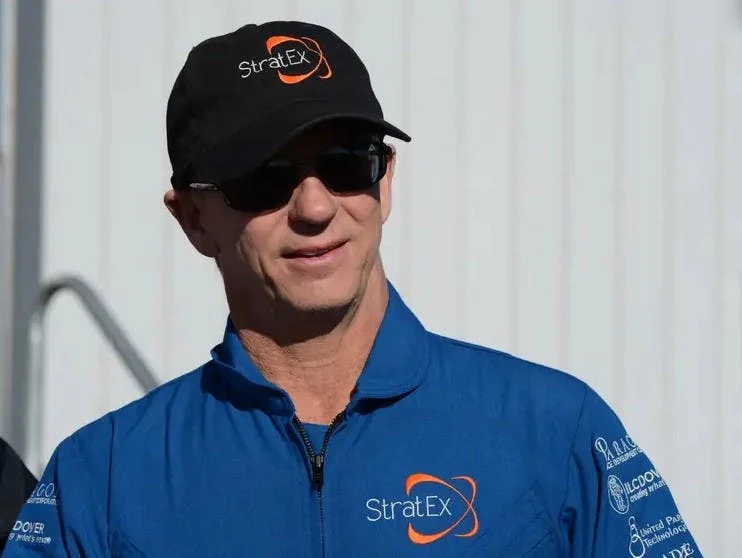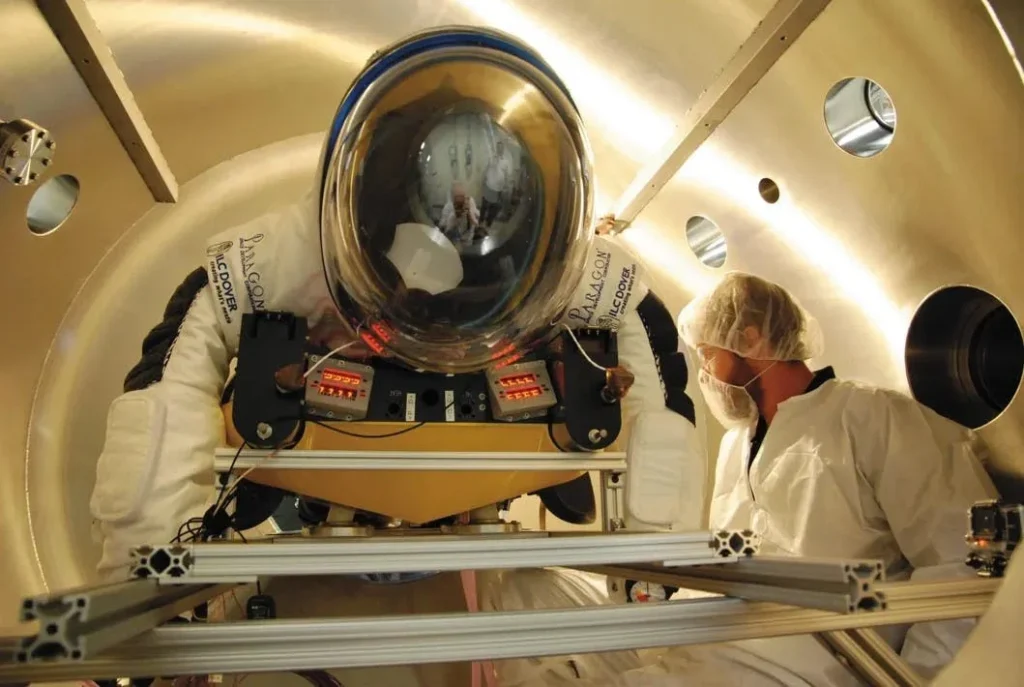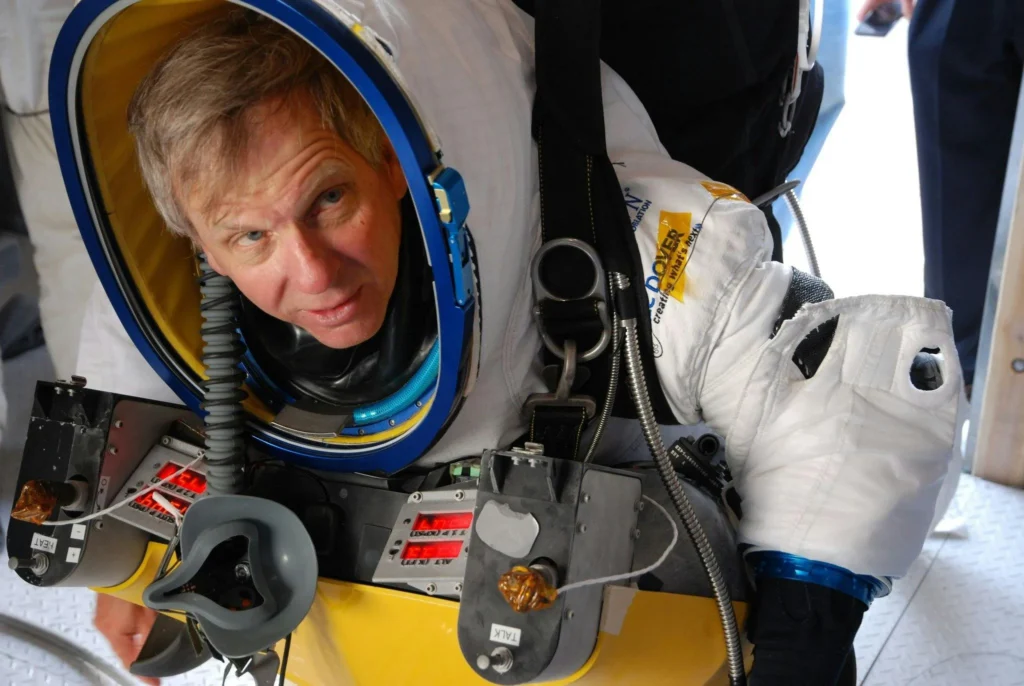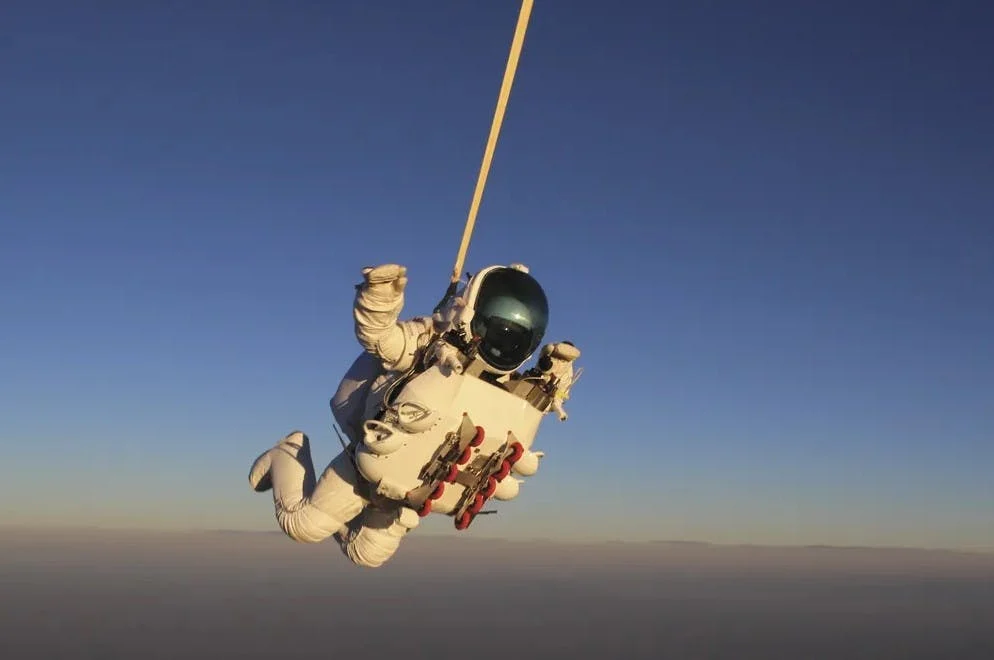Our world teems with unsung heroes, extraordinary individuals whose accomplishments push the boundaries of what is possible. One such person is Robert Alan Eustace, a name you might not instantly recognize, but whose achievement is truly out of this world. This Google Exec jumped from 130,000 feet.

A SKYWARD BOUND COMPUTER SCIENTIST
Alan Eustace, a notable figure in the tech industry, is a computer scientist by profession. He served as the Senior Vice President of Engineering at Google until 2015. However, his contributions extend beyond the realms of computer science.
Born and raised in Central Florida, as a son of an aerospace engineer Eustace’s early life was steeped in the awe-inspiring spectacles of NASA rockets launching from the Kennedy Space Center. Each fiery ascent fueled his dreams of space exploration.

In late 2010 Eustace had just finished spending years on a personal endeavor demonstrating the feasibility of skydiving from a Gulfstream 550 business jet. Prompted by mere curiosity, he put his theory to the test and proved it right. This tendency to chase questions with actions, however idiosyncratic, defines his approach to life.
His expertise led master skydiver Luigi Cani to seek his counsel on life support systems for a potential stratospheric jump. He aimed to shatter Joe Kittinger’s 1960 altitude record. Eustace’s unconventional advice? Skip the capsule altogether.

A CURIOUS QUESTION AND AN INCREDIBLE JOURNEY
His fascination transformed into an bold goal when Eustace asked a pivotal question: “Is it possible to build a scuba diving system for stratospheric exploration?” This question sparked a year-long research endeavor, which convinced him of a simpler and safer path to this audacious dream.
Subsequently, Eustace embarked on a three-year journey, one that involved the collaboration of brilliant minds from the Paragon Space Development Corporation, ILC Dover, and World View. This remarkable endeavor was kept a secret from the world until it was accomplished.

Investing $3 million of his own money into the project, Eustace demonstrated unwavering commitment to his quest. His journey involved tackling and overcoming innumerable engineering challenges and creating new technologies, all in the name of stratospheric exploration.
Taber MacCallum, the safety officer on this missions said “It was just a really, really hard problem. And it seemed like as the problems got harder and the challenges got greater, Alan got even more into it.”
The technology developed during this mission has proven to be a resounding success. The new technology developed during this project included a new state-of-the-art suit, new parachute designs, and safety protocols.

THE LEAP INTO HISTORY
October 2014 marked the climax of Eustace’s journey. At just after 7 a.m. that morning in a desert in New Mexico, Alan started ascending to 135,890 feet into the stratosphere with a gas-filled balloon. In his specially designed spacesuit, Eustace embarked on a two-hour journey to the edge of the blackness of space.
After an all clear from ground control, Alan was detached from the balloon which led to an exhilarating 15-minute free-fall back to Earth. With a speed reaching 822 mph, Eustace shattered the sound barrier and experienced over 4 Gs of force. After a four and a half minute fall, his parachute was deployed for the last 10 minutes of his descent back to the safety of Earth.

This daring jump didn’t just break records; it smashed them. It surpassed the 127,852-foot jump of Felix Baumgartner, the Austrian daredevil, achieved in 2012. This jump was not widely publicized like Felix Baumgartner’s jump which was financed by Red Bull who also invested in heavily marketing the space jump.
Eustace,StratEx and others involved in the project wanted to keep the mission focused on the science and engineering and so all their resources went into that effort.
INSPIRING THE FUTURE
Eustace’s achievement transcends personal glory. After his historic leap, he reflected: “Our hope is that the film and my jump will excite a new generation of students to challenge themselves, explore their world, and redefine what is possible.”
In this spirit, Eustace donated his spacesuit to the National Air and Space Museum, allowing future generations to witness firsthand the technology that took him to the stratosphere.

THE VISION AHEAD
Alan Eustace, a devoted family man and father of three, still relishes the thrill of skydiving, piloting planes, helicopters, and paragliders. Yet, he confirms there won’t be any more stratospheric jumps in his future.
Without a spacesuit, risking a marital split, and his team pursuing new ventures, another stratospheric leap seems off the cards. His erstwhile teammates founded World View, a pioneering firm aiming to render conventional satellites obsolete with “stratollites”—balloons poised to take their place.

Their operations base? A gigantic facility in the Arizona desert, purpose-built for crafting this groundbreaking tech. Eustace talks enthusiastically about World View’s ultimate goal: to enable safe and accessible stratospheric exploration. Envisaging a spacious capsule that allows people to ascend, marvel at breathtaking vistas, and descend securely, he encapsulates the venture’s vision—making the stratosphere, one of Earth’s most stunning locales (or just beyond, perspective-dependent), accessible to all.
A LASTING LEGACY
The record-breaking jump is a testament to human determination and the boundless curiosity that drives us. Eustace’s venture has shown that the sky is merely a starting point, not a limit. His passion for exploration, backed by a team of devoted individuals, has expanded the parameters of human capabilities. Ultimately, this Google exec didn’t just jump from 130,000 feet – he soared into a new chapter of history, inspiring generations to reach for the stars.

 Additional Facts
Additional Facts
37,000 Feet
This is how high the the highest flying bird can fly. The lower layer of the Stratosphere starts around 32,000 feet. The bird that flies this high is the Ruppel’s Griffin Vulture (Gyps Rueppellii) from Africa. The Whooper Swan (Cygnus cygnus) and the common Crane (Grus grus) are also birds that are considered ‘stratospheric’ because they both can fly at an altitude of 32,000 feet.
103 years old
The age of the oldest person to do a tandem skydive. Rut Linnéa Ingegärd Larsson of Sweden set the Guinness World Record for the oldest tandem parachute jump (female) at the age of 103 and 259 days on May 29th 2022.
640 sky dives
is the record for skydives in one 24 hours by a person. That’s about 27 dives PER HOUR. The record holder is Jay Stokes who had a team with pre-prepped parachutes and would fly to minimum altitude of 2,100 feet before jumping, landing and running to another waiting plane to do it over and over again. He beat his own previous world record of 534 jumps in a day.





